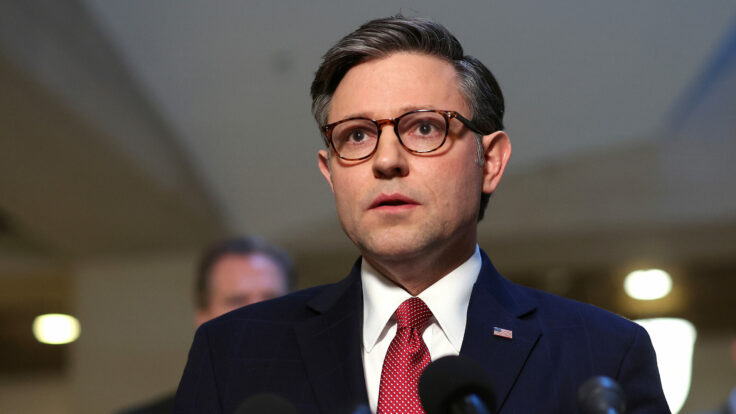I had a dream that the nation descended on Memphis, Tennessee. We returned to the place where Dr. Martin Luther King Jr. last breathed so we could breathe new life into his dream. In the face of threats to teaching Black history, in the face of persistent wealth inequality, we would commence the month of February with a recommitment to truth. My dream was vivid. At the gathering I imagined, many were in attendance: Vice President Kamala Harris, Reverend Al Sharpton, even Spike Lee. Speakers spoke the truth and singers sang new songs of freedom. This Black History Month recommitment ceremony was live-streamed and televised. And it was all captured by a young, local photographer named Tyre Nichols, who said he always wanted “to bring my viewers deep into what I am seeing through my eye and out through my lens.” We saw what he saw. This is how you kick off Black History Month, I thought. Then I woke up.
I woke up to find that the nation had indeed descended on Memphis. Yes, V.P. Harris and Reverend Al and Spike Lee were in attendance. But the reason was death. It was the funeral of 29 year-old Tyre Nichols, who died at the hands, the literal hands, of a unit of the Memphis Police Department. Also in attendance were the families of other victims of police violence including Breonna Taylor, Botham Jean, and George Floyd. Speakers spoke the truth, and singers sang songs of freedom and woe.
In a just world—or even just a slightly more functional America—this funeral wouldn’t have happened. But it did happen, thanks to the police unit known as the “Street Crimes Operation to Restore Peace in Our Neighborhoods.” This state-sanctioned gang of “Scorpions,” which has been terrorizing Black neighborhoods for years, both did and did not live up to its name. On the one hand, scorpions sting and paralyze and consume their victims, so, mission accomplished. On the other hand, any effort to “restore peace” through violence is always a flawed and fatal proposition. What a way to kick off Black History Month: by repeating one of history’s most deadly and avoidable lessons.
We’ve been here too many times before. Our voices are hoarse and our feet are sore. The list of victims grows so quickly that protest signs should be replaced by digital LEDs to keep up with the names.
I didn’t watch the video. I didn’t even try. I knew from the moment I learned about Nichols’s death that there was nothing new to see. I’ve had enough of murder TV. It’s not healthy to see myself killed over and over again, by taser, firearm, baton, fist, foot, and knee. I’ve learned that if you watch yourself die too many times, you start to die inside. (America is addicted to watching me die, to watching itself die.) Thankfully, the algorithms have gotten more humane, no longer force-feeding me images of Black pain. They mercifully blur the frames with content warnings, allowing me to avoid witnessing lynchings in the morning. But even if I don’t see police murder another Black person, that doesn’t stop the killing.
In this case, the officers looked like me, too. Most of the Scorpions were Black. You might think that is an interesting fact, especially when coupled with the observation that they were so swiftly relieved of their badges and guns, ejected from the force, and charged with crimes. Speaking of which, we still don’t know what crime Tyre was engaged in to justify the crimes of these so-called crime-fighters. But their Blackness seems… interesting? Mysterious? Shocking?
Actually, no. James Baldwin told us so in 1955, in Notes of a Native Son, when he wrote, “In Harlem, Negro policemen are feared even more than whites, for they have more to prove and fewer ways to prove it.”
Baldwin did it again in 1985, in The Evidence of Things Not Seen, when he wrote, “A Black policeman could completely demolish you. He knew far more about you than a White policeman could and you were without defenses before this Black brother in uniform whose entire reason for breathing seemed to be his hope to offer proof that though he was Black, he was not Black like you.”
KRS-One rapped about it in 1993’s “Black Cop,” a direct appeal to the Black law enforcement officer who upholds laws designed to hurt the Black community: “Black cop, black cop, black cop / Stop shootin’ black people, we all gonna drop / You don’t even get, paid a whole lot / So take your M-60 and put it ‘pon lock!”
In other words, we’ve known that simply putting Black people in corrupt systems doesn’t change the system. (See: President Obama). In fact, the very presence of Black people can be used to justify the system’s faults. And while the systems don’t change, those who join it do, and their membership often increases its destructive potential.
This isn’t just a racial observation. It’s human. The presence of a historically victimized group can simply make victimization easier. (See: Ghislaine Maxwell, whose womanhood didn’t help the girls caught in Jeffrey Epstein’s web). Systems of abuse aren’t undermined by diversifying the abusers. They are strengthened. To truly change the system, we need more.
The answer has been written, sung, danced, spoken, bullet-pointed, and expressed in every medium known. It’s in the subsections of the George Floyd Justice in Policing Act. It’s in the data collected by the self-described “justice nerds” at the Center for Policing Equity. It’s in the literal blueprint of books like Defund Fear: Safety Without Policing, Prisons, and Punishment. The keys include tracking police behavior with the same rigor we track civilians; reimagining law enforcement training and vetting; and using people who’ve been involved in violence to help prevent violence through “violence interruption” (as CRED in Chicago does). They include greater investments in health, education, nutrition, and jobs—things that do far more to keep us safe than police patrols and the threat of violence. When we feel violated by criminal acts, we must deploy restorative justice that holds people accountable while also holding them in community.
We know what works, yet we repeat ourselves. We know what to do, but fear holds us back. We are afraid to admit it can feel good to shove a problem aside, rather than face it, especially when that problem looks like people different from us. We are afraid that if we really face the “criminals” in our society, really see them, we will also see some part of ourselves and recognize that we aren’t so different after all. It was fear, after all, that inspired leaders in Memphis and other cities across the country to deploy “hotspot” aggressive policing units, such as Scorpion, as they experienced a rise in homicides. And the results are always the same: A frightened public, amped up by a frightened media, pressures frightened politicians to hire frightened police to frighten the public. But that fear isn’t borne equally by all. It is poor residents and residents of color who feel the impact as it cascades down from the wealthier or whiter parts of society.
We are constantly afraid in America. There’s an ever-changing list of reasons and scapegoats—criminals, Black people, immigrants, gays, thugs, Muslims, trans kids, China—but the constant is the fear itself. That fear allows us to tolerate the dehumanization exhibited by those former Memphis PD officers toward their neighbor, Tyre. Those officers aren’t special. They aren’t just “bad apples.” We are all stewing in barrels made rotten by fear.
Recently I had the pleasure of holding a public conversation with Nsé Ufot, former C.E.O. of the New Georgia Project, for the upcoming season of my podcast How To Citizen. Ufot reminded me of the work of Black feminist writer and activist, bell hooks, who identified the cultivation of fear as a key to the culture of domination in America. In All About Love, hooks writes, “Fear is the primary force upholding structures of domination. It promotes the desire for separation, the desire not to be known. When we are taught that safety lies always with sameness, then difference, of any kind, will appear as a threat.”
We are overdosing on fear in America. But the antidote to fear, as every great leader, artist, and seer has noted, is love. “When we choose to love we choose to move against fear—against alienation and separation. The choice to love is a choice to connect—to find ourselves in the other.” hooks argued for us to embrace a “love ethic.”
We’ve got to find ourselves in the other. We’ve got to move from fear to love. Otherwise, we will keep repeating history’s deadliest and most avoidable lessons. And we will deny ourselves the beauty of seeing the world the way a young, Black photographer named Tyre wanted us to.
Rest in peace, Tyre. I love you.

















